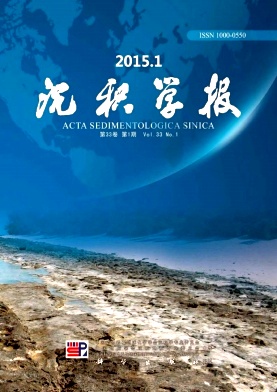|
[1]
|
吴敬禄,马龙,吉力力·阿不都外力. 中亚干旱区咸海的湖面变化及其环境效应[J]. 干旱区地理,2009,2(3):418-422.[Wu Jinglu, Ma Long, Jilili Abuduwaili. Lake surface change of the Aral Sea and its environmental effects in the arid region of the Central Asia[J]. Arid Land Geography, 2009, 2(3): 418-422.] |
|
[2]
|
Aladin N V, Plotnikov I S, Micklin P, et al. Aral Sea: water level, salinity and long-term changes in biological communities of an endangered ecosystem—past, present and future[J]. Natural Resources and Environmental Issues, 2009, 15(36): 177-183. |
|
[3]
|
Glazovsky N F.The salt balance of the Aral Sea[J]. GeoJournal, 1995, 35(1): 35-41. |
|
[4]
|
Micklin P. The Aral sea disaster[J]. Annual Review of Earth and Planetary Sciences, 2007, 35: 47-72. |
|
[5]
|
Boomer I, Aladin N, Plotnikov I, et al. The palaeolimnology of theAral Sea:a review[J]. Quaternary Science Reviews, 2000, 19(13): 1259-1278. |
|
[6]
|
Boomer I. Sub–fossil Ostracoda and the death of the Aral Sea[J]. Geology Today, 1993, 9(1): 18-22. |
|
[7]
|
Boomer I. Palaeoenvironmental indicators from Late Holocene and contemporary ostracoda of the Aral Sea[J]. Palaeogeography, Palaeoclimatology, Palaeoecology, 1993, 103(3/4): 141-153. |
|
[8]
|
Boomer I, Wünnermann B, Mackay A W,et al. Advances in understanding the Late Holocene history of the Aral Sea region[J]. Quaternary International, 2009, 194(1/2): 79-90. |
|
[9]
|
Oberhänsli H, Novotná K, Píşková A, et al. Variability in precipitation, temperature and river runoff in W Central Asia during the past 2000 yrs[J]. Global and Planetary Change, 2011, 76(1/2): 95-104. |
|
[10]
|
Krigonov S K. Extent of the Aral Sea drop in the Middle Age[J]. Doklady Earth Sciences, 2009, 428(1): 1146-1150. |
|
[11]
|
Austin P, Mackay A, Palagushkina O, et al. A high resolution diatom-inferred palaeoconductivity and lake level record of the Aral Sea for the last 1600 yr[J]. Quaternary Research, 2007, 67(3): 383-393. |
|
[12]
|
Cretauxa J F, Letolleb R, Bergé-Nguyena M, et al. History of Aral Sea level variability and current scientific debates[J]. Global and Planetary Change, 2013, 110: 99-113. |
|
[13]
|
Last W M, Deleqat Jantay, Juggins, et al. Late Holocene history of the Aral Sea[C]// GSA 1998 Annual Meeting& Exposition. 1998, P-16, A-162. |
|
[14]
|
宋友桂. 沉积矿物学在古环境恢复中的应用进展[J]. 东华理工大学学报:自然科学版,2009,32(4):313-323.[Song Yougui. Sedinentary mineralogy and its application for paleoenvironmental reconstruction[J]. Journal of East China Institute of Technology: Natural Science, 2009, 32(4): 313-323.] |
|
[15]
|
金章东. 湖泊沉积物的矿物组成、成因、环境指示及研究进展[J]. 地球科学与环境学报,2011,33(1):34-44.[Jin Zhangdong. Composition, origin and environmental interpretation of minerals in lake sediments and recent progress[J]. Journal of Earth Science and Environment, 2011, 33(1): 34-44.] |
|
[16]
|
张家武,何晶,陈硕,等. 第四纪湖相介形类壳体化石在古环境中的应用——种属组合研究进展与问题[J]. 地球科学进展,2009,24(11):1229-1237.[Zhang Jiawu, He Jing, Chen Shuo, et al. Applications of non-marine ostracods in Quaternary paleoenvironment——advances and problems in fossil assemblages[J]. Advances in Earth Science, 2009, 24(11): 1229-1237.] |
|
[17]
|
李军,余俊清. 湖相介形虫古生态学在环境变化研究中的应用[J]. 盐湖研究,2002,10(1):66-71.[Li Jun, Yu Junqing. Application of lacustrine ostracodes to the study of environmental changes[J]. Journal of Salt Lake Research, 2002, 10(1): 66-71.] |
|
[18]
|
于革. 高分辨湖泊沉积和孢粉记录对气候、水文变化的响应[J]. 沉积学报,2011,29(1):118-124.[Yu Ge. High-resolution records of lacustrine sedimentology and palynology responding to changes in climate and hydrology[J]. Acta Sedimentologica Sinica, 2011, 29(1): 118-124.] |
|
[19]
|
黄小忠,赵艳,程波,等. 新疆博斯腾湖表层沉积物的孢粉分析[J]. 冰川冻土,2004,26(5):602-609.[Huang Xiaozhong, Zhao Yan, Cheng Bo, et al. Modern pollen analysis of the surface sediments from the Bosten Lake, Xinjiang, China[J]. Journal of Glaciology and Geocryology, 2004, 26(5): 602-609.] |
|
[20]
|
许哲平,陈建强,肖景义. 云南昆明盆地中更新世晚期以来的孢粉记录及古气候演化[J]. 地质学报,2009,83(1):65-77.[Xu Zheping, Chen Jianqiang, Xiao Jingyi. Pollen records since late middle-pleistocene in the Kunming Basin, Yunnan province and paleoclimate evolution[J]. Acta Geologica Sinica, 2009, 83(1): 65-77.] |
|
[21]
|
Boroffka N G O, Oberhänsli H, Sorrel P, et al. Archaeology and climate: settlement and lake level changes at the Aral Sea[J]. Geoarchaeology, 2003, 21(7): 721-734. |






 DownLoad:
DownLoad: